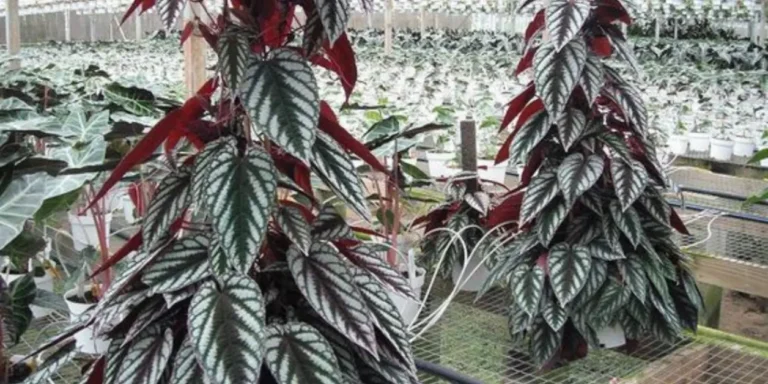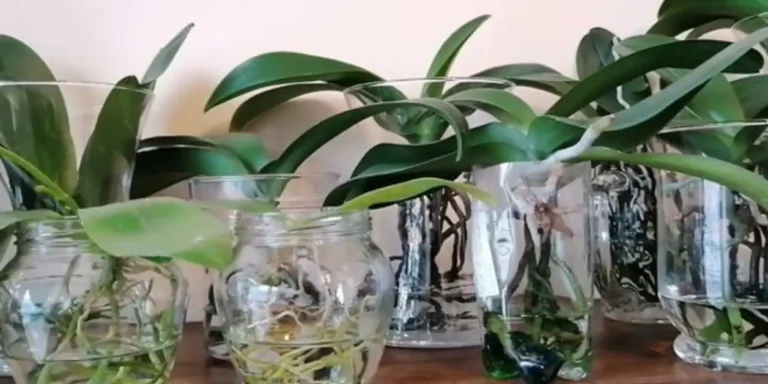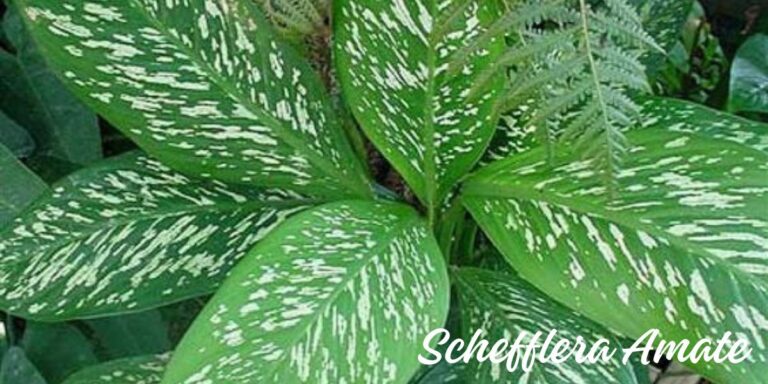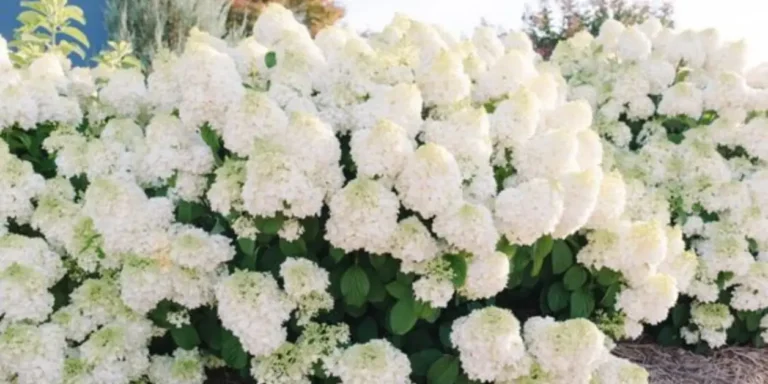Calathea 8 Varieties ‘Care And Growing Tips
Calathea varieties are fascinating plants with intricate foliage, perfect for indoor gardens. Originating from South American rainforests, they thrive in dappled light. These tropical beauties come in various species, each boasting vibrant leaf patterns that add an exotic touch to any space.
One unique trait is their responsiveness, which allows them to adjust throughout the day, making them interactive to observe. Understanding their sensitivity to light and temperature is key to successful care.
Fortunately, they’re low-maintenance and even purify the air! Each offers unique charm and care requirements, from popular choices like Calathea orbifolia to striking varieties like Calathea ornata. By incorporating Calathea varieties into indoor spaces, enthusiasts enhance aesthetics and promote well-being and connection to nature.
Calathea 8 Varieties For Indoor Gardens
When choosing Calathea varieties for your indoor garden, there are several standout options, each with unique charm and care requirements. Let’s explore some of the most popular choices that have captured the hearts of plant enthusiasts worldwide.
01 .Calathea Orbifolia
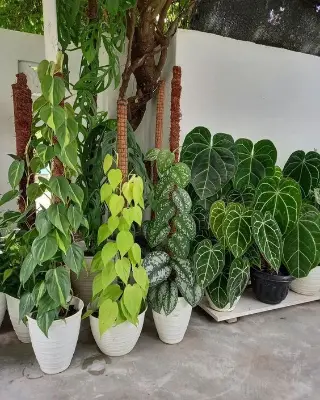
With its large, round leaves featuring silver-green stripes, Calathea orbifolia is a striking choice. This variety is known for its elegant appearance and relatively low maintenance, making it suitable for beginners and experienced plant lovers.
Light: Calathea Orbifolia prefers bright, indirect light indoors.
Water: Keep the soil evenly moist, but avoid waterlogging.
Leaf Color: Its leaves feature a pale green color with white stripes.
Mature Size: Typically grows to a height of around 2 to 3 feet when fully mature
.
02 .Calathea Lancifolia (Rattlesnake Plant)
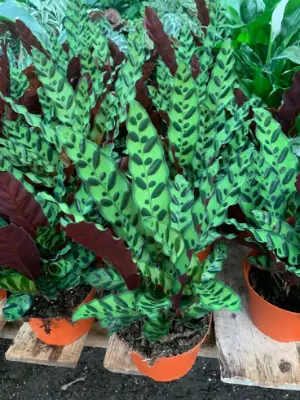
Named for its long, wavy leaves resembling a rattlesnake’s markings, Calathea lancifolia adds a touch of the exotic to any space. This variety thrives in low to medium-light conditions and prefers consistently moist soil.
Light: Bright, indirect light
Water: Keep soil consistently moist
Leaf Color: Dark green with stripe
Mature Size: Up to 2 feet
03 .Calathea Zebrina (Rattlesnake Plant)

Light: Indirect sunlight
Water: Keep soil consistently moist
Leaf Color: Green with stripes
Size: Up to 2 feet
The Calathea zebrina is aptly named for its distinctive zebra-like stripes on its leaves. This variety is known for its vibrant green color and is an excellent choice for those looking to add a playful element to their indoor garden.
04 .Calathea Makoyana (Peacock Plant)
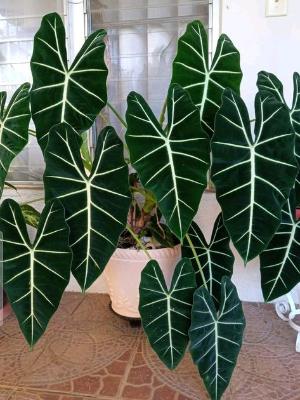
Light: Indirect sunlight
Water: Keep soil slightly moist
Leaf Color: Green with pattern
Size: Up to 2 ft
Renowned for its intricate patterns that resemble peacock feathers, Calathea makoyana is a visually stunning variety. It requires bright, indirect light and consistently moist soil to thrive.
05 .Calathea Roseopicta (Rose-Painted Calathea)

Light: Indirect sunlight
Water: Keep soil slightly moist
Leaf Color: Variegated pink and green
Size: Up to 2 feet
This variety is celebrated for its ornate pink markings on its dark green leaves, resembling delicate brushstrokes. Calathea roseopicta is more demanding in care, requiring higher humidity levels and filtered light.
06 .Calathea Freddie (Freddie Plant)
- Calathea Freddie is known for its compact size and distinctive foliage with green and silver patterns. It is a great choice for smaller spaces or as part of a collection of indoor plants.
07 .Calathea White Fusion
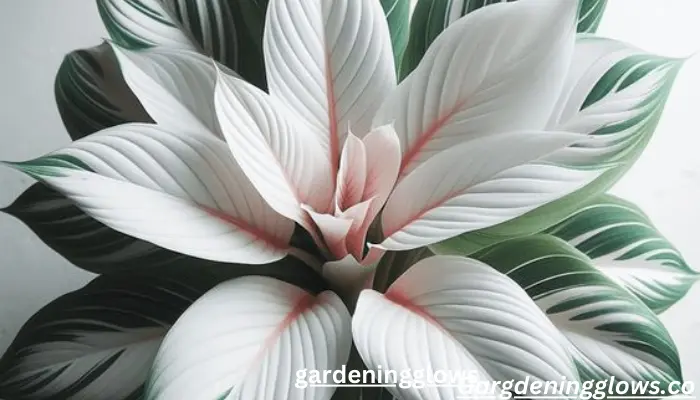
Light: Water: Keep soil slightly moist
Leaf Color: Variegated white and green
Size: Up to 2 feetIndirect sunlight
With its striking variegated leaves featuring shades of green, white, and pink, Calathea white fusion is a sought-after variety. It requires bright, indirect light and consistently moist soil to showcase its vibrant colors.
Each of these Calathea varieties brings a unique aesthetic to indoor gardens. In the next section, we will delve deeper into one of the most popular varieties, Calathea ornata, exploring its specific characteristics and how to care for it.
08 .Calathea Ornata: The Pinstripe Plant

Light: Indirect sunlight
Water: Keep soil slightly moist
Leaf Color: Pink stripes on dark green
Size: Up to 2 feet
Calathea ornata, commonly known as the Pinstripe Plant, is a captivating member of the Calathea family, cherished for its distinctive foliage. This variety features striking dark green leaves adorned with thin, bright pink stripes, creating an eye-catching contrast that adds elegance to any indoor setting.
Characteristics of Calathea Ornata
Pinstripe Pattern
- The defining feature of Calathea ornata is its pinstripe pattern. Thin, pink lines traverse the length of the dark green leaves, resembling delicate brushstrokes. This visual appeal makes it a favorite among those seeking a plant with a touch of sophistication.
Leaf Shape
- The leaves of Calathea ornata are broad and elliptical, creating a lush and full appearance. Combining the pinstripes and the leaf shape contributes to the plant’s aesthetic appeal.
Moderate Size
- Calathea ornata typically reaches a moderate size, making it suitable for various spaces, from tabletops to larger plant stands. Its manageable size allows for versatility in placement within your indoor garden.
Care Tips For Calathea Ornata
Light Requirements
- Calathea ornata thrives in bright, indirect light. Avoid exposing it to direct sunlight, which can lead to leaf burn. Placing it near a window with filtered light is ideal for maintaining its vibrant appearance.
Humidity Needs
- This variety prefers higher humidity levels. To create a suitable environment, consider placing a humidifier nearby or occasionally misting the plant. Adequate humidity helps prevent the edges of the leaves from becoming crispy.
Watering Routine:
- Keep the soil consistently moist but not soggy. Water the plant when the top inch of the soil feels dry. Proper drainage is essential to prevent root rot, so ensure the pot has drainage holes.
Temperature Range
- Calathea ornata thrives in warm temperatures. It’s essential to keep it away from drafts and sudden temperature fluctuations. Aim for a consistently warm environment to support its well-being.
Common Characteristics Of Calathea Varieties
Calathea varieties share several distinctive characteristics contributing to their allure and popularity among plant enthusiasts. Understanding these common traits is crucial for providing the proper care these plants need to thrive in indoor settings.
Leaf Patterns And Colors
- Calathea leaves are a visual feast, boasting an array of patterns, colors, and textures. From the intricate pinstripes of Calathea ornata to the bold, contrasting hues of Calathea medallion, these plants showcase a remarkable diversity. The leaves often feature intricate designs, resembling nature’s artwork.
Petiole Movement
- One of the unique features of Calathea plants is their ability to move their leaves in response to environmental changes. The leaves open and close day and night, a phenomenon known as nyctinasty. This rhythmic movement is fascinating to observe and contributes to the plant’s adaptation to changing light conditions.
Sensitive To Light And Temperature
- Calathea varieties are sensitive to light levels and temperature fluctuations. They prefer indirect, filtered light and thrive in consistently warm and humid conditions. Avoid exposing them to direct sunlight, which can lead to leaf burn. Keeping them in a humid environment, such as placing a tray of water nearby, helps mimic their native rainforest habitat.
Low Maintenance Foliage
- While Calathea plants are prized for their stunning foliage, they are relatively low-maintenance in grooming. Unlike some plants that require frequent pruning, Calathea varieties generally maintain their aesthetic appeal without requiring extensive trimming.
Air-Purifying Qualities
- Beyond their visual appeal, Calathea plants contribute to a healthier indoor environment by purifying the air. They actively remove toxins, making them an excellent choice for those seeking aesthetic satisfaction and the added benefit of improved air quality.
Understanding these common characteristics lays the foundation for successful Calathea care. In the following sections, we’ll delve into specific popular Calathea and providicalathea varieties, insights into their unique traits, and how to care for them effectively.
Tips For Growing And Caring For Calathea Varieties
Cultivating a thriving collection of Calathea varieties requires attention to their specific needs. Here are essential tips to ensure the well-being and visual appeal of your Calathea plants:
Light and Placement
- Place your Calathea varieties in locations with bright, indirect light. Avoid direct sunlight, as it can scorch the leaves. Consider positioning them near windows with sheer curtains to filter the light effectively.
Humidity Control
- Calathea plants, originating from humid rainforest environments, appreciate higher humidity levels. You can increase humidity by misting the leaves, placing a tray of water nearby, or using a humidifier.
Consistent Moisture
- Keep the soil consistently moist but not soggy. Water when the top inch of the soil feels dry. Use well-draining soil and ensure the pots have drainage holes to prevent water accumulation.
Avoid Cold Drafts
- Calathea varieties are sensitive to temperature changes, especially cold drafts. Place them away from windows, doors, or vents that may expose them to sudden temperature fluctuations.
Regular Pruning
- While Calathea plants require minimal pruning, remove any yellow or damaged leaves regularly. This not only enhances the plant’s appearance but also promotes overall health.
Fertilize Wisely
- Feed your Calathea varieties with a balanced liquid fertilizer during the growing season (spring and summer) every 4-6 weeks. Avoid over-fertilizing, as excessive nutrients can lead to salt buildup in the soil.
Monitor for Pests
- Watch for common indoor plant pests such as spider mites and aphids. If pests are detected, treat them promptly using insecticidal soap or neem oil, ensuring a pest-free environment.
By incorporating these tips into your care routine, you can create an environment that supports the health and vibrancy of your Calathea varieties. In the next section, we’ll explore the specific characteristics and benefits of Calathea varieties beyond their aesthetic appeal.
What is the best variety of Calathea?
The best Calathea variety varies depending on personal taste and your indoor environment. Popular options include Calathea Orbifolia with silver-green stripes, Calathea Medallion known for its round leaves, and Calathea Zebrina for its vibrant green color and stripes. Choose the one that fits your preferences and matches your space’s lighting and humidity conditions.
How do I identify my Calathea?
To identify your Calathea, examine its leaf patterns, colors, and shape. Look for unique features like stripes, spots, or distinctive leaf shapes. You can also compare it with images online or consult a plant identification guide.
How do I know if my Calathea is happy?
You can tell if your Calathea is happy by observing its leaves. If they’re vibrant and upright, without wilting or browning edges, it likely means the plant is receiving adequate light, water, and humidity. Additionally, new leaf growth and occasional leaf movements are signs of a contented Calathea.
What water is best for Calathea?
The best water for Calathea is distilled or filtered water at room temperature. Avoid using water that contains fluoride or chlorine, as these chemicals can harm the plant’s sensitive roots and leaves.


